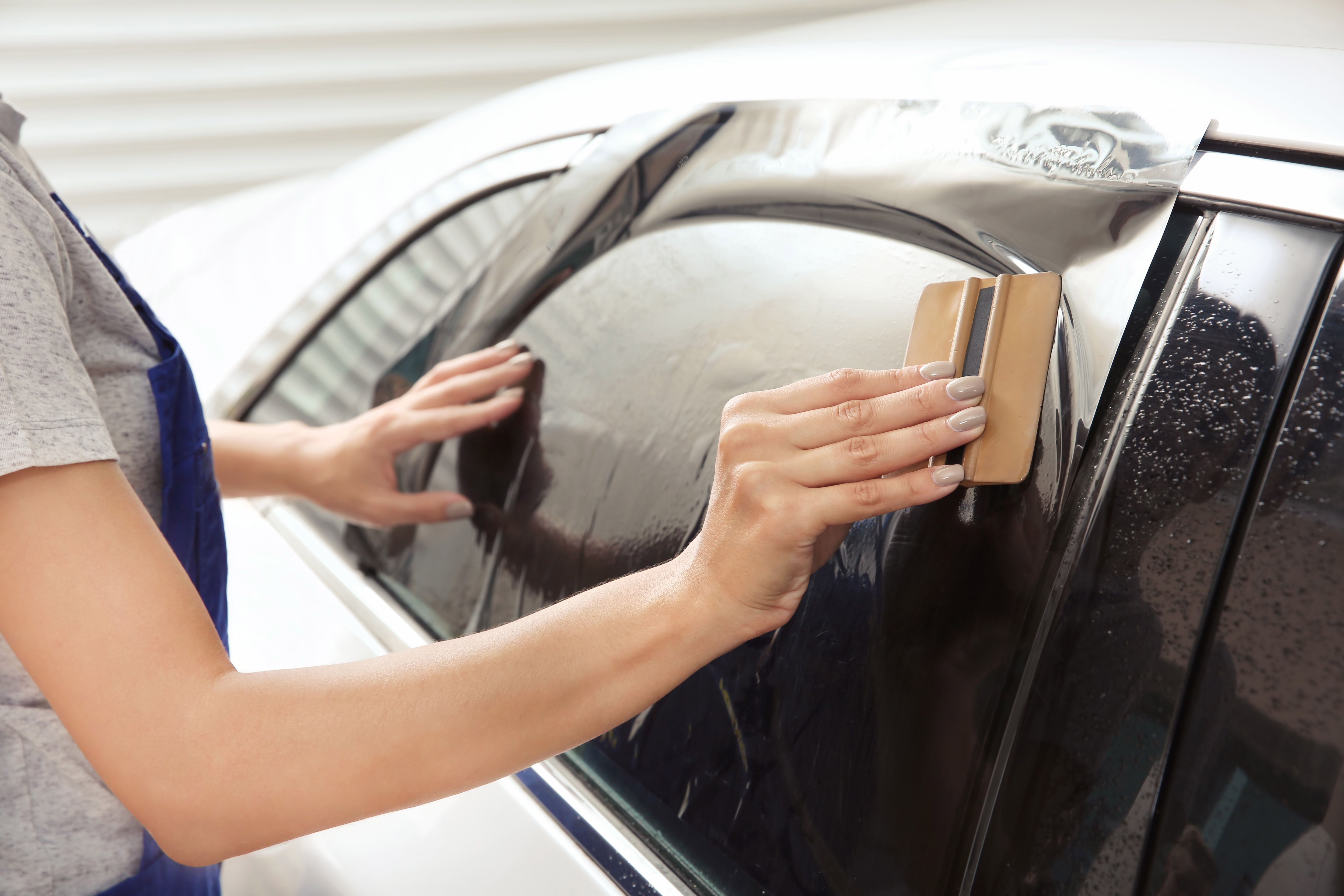How does Window Tinting Work?
Window tinting is a process of applying a thin film of material to the windows of a car or building:
The film is typically made of polyester and comes in varying degrees of opacity. The tinted film is applied to the inside ceramic tinting of the windows, and it reduces the amount of light that passes through the glass.
Cleaning the window:
Before applying the tinting film, the window must be thoroughly cleaned to ensure that there is no dirt, dust, or debris on the surface.
Cutting the film:
The tinting film is cut to the size of the window using a special cutting tool. The film is typically cut slightly larger than the window to allow for trimming.
Applying the film:
The tinting film is applied to the inside of the window using a solution of water and soap. The film is carefully positioned and smoothed out to ensure that there are no air bubbles or wrinkles.
Trimming the film:
Once the film is in place, it is carefully trimmed to fit the exact size and shape of the window.
Drying the film:
The film is left to dry for several hours, allowing the adhesive to bond to the window.
The primary purpose of window tinting is to reduce the amount of light and heat that enters a building or car. The film can also provide privacy and reduce glare.
Additionally, some types of tinting film can also provide insulation, which can help to reduce energy costs by keeping the building or car cooler in the summer and warmer in the winter.
Automotive Window Tinting:
Automotive window tinting is the process of applying a thin film of tinted material to the windows of a vehicle.
The purpose of automotive window tinting is to reduce the amount:
of sunlight and heat that enters the car, while also providing privacy and reducing glare. Window tinting can be done on any type of vehicle, including cars, trucks, SUVs, and vans.
The process of window tinting involves applying a thin:
adhesive film to the inside of the vehicle's windows. The film is typically made of a polyester material that is coated with a special tinting agent.
The film is cut to the size and shape of the window and then applied to the inside of the window using a special adhesive.
Once applied, the film is smoothed out to remove any bubbles or wrinkles, and then left to dry for several hours.
There are several benefits to automotive window tinting:
One of the main benefits is that it helps to reduce the amount of heat that enters the car, which can help to keep the interior cooler and more comfortable.
Window tinting can also help to reduce the amount of ultraviolet (UV) radiation that enters the car, which can help to protect the driver and passengers from skin damage and sunburn.
In addition to these functional benefits:
automotive window tinting can also improve the appearance of the vehicle. The tinted windows
can give the car a sleek and stylish look, and can also provide added privacy for the driver and passengers.
It is important to note that there are laws regulating the amount:
of tint that can be applied to automotive windows. These laws vary by state and country, and may limit the darkness of the tint or specify which windows can be tinted. Before having window tinting applied
UV Protection, Impact Resistant:
UV protection and impact resistance are two important features that are often found in eyewear and other protective gear.
UV protection refers to the ability of the eyewear to block ultraviolet (UV):
rays from the sun. Exposure to UV radiation can cause damage to the eyes, including cataracts, macular degeneration,
and even skin cancer around the eyes. UV protection in eyewear is achieved by using special coatings or materials that absorb or reflect UV radiation.
Impact resistance refers to the ability of the eyewear to withstand:
physical impact without breaking or shattering. This is especially important in protective eyewear used in sports or work environments where there is a risk of flying debris or other hazards. Impact-
resistant eyewear is typically made from materials such as polycarbonate or Trivex, which are highly durable and able to withstand impact without cracking or breaking.
Many types of eyewear, including sunglasses, safety glasses:
and sports goggles,tinting are available with both UV protection and impact resistance. It is important to choose eyewear
that meets your specific needs and provides adequate protection for your eyes in the activities you participate in.

Comments
Post a Comment